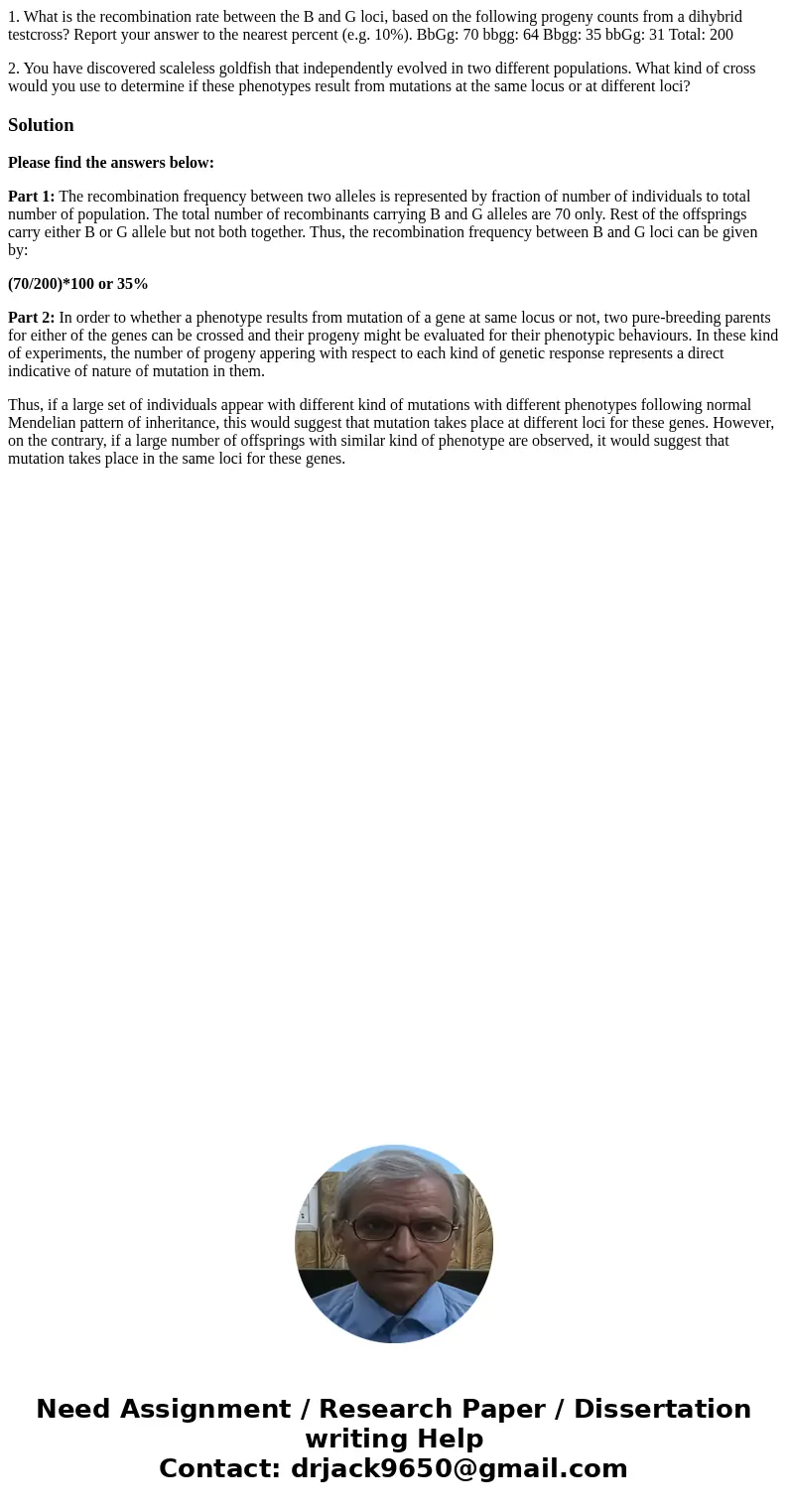1 What is the recombination rate between the B and G loci ba
1. What is the recombination rate between the B and G loci, based on the following progeny counts from a dihybrid testcross? Report your answer to the nearest percent (e.g. 10%). BbGg: 70 bbgg: 64 Bbgg: 35 bbGg: 31 Total: 200
2. You have discovered scaleless goldfish that independently evolved in two different populations. What kind of cross would you use to determine if these phenotypes result from mutations at the same locus or at different loci?
Solution
Please find the answers below:
Part 1: The recombination frequency between two alleles is represented by fraction of number of individuals to total number of population. The total number of recombinants carrying B and G alleles are 70 only. Rest of the offsprings carry either B or G allele but not both together. Thus, the recombination frequency between B and G loci can be given by:
(70/200)*100 or 35%
Part 2: In order to whether a phenotype results from mutation of a gene at same locus or not, two pure-breeding parents for either of the genes can be crossed and their progeny might be evaluated for their phenotypic behaviours. In these kind of experiments, the number of progeny appering with respect to each kind of genetic response represents a direct indicative of nature of mutation in them.
Thus, if a large set of individuals appear with different kind of mutations with different phenotypes following normal Mendelian pattern of inheritance, this would suggest that mutation takes place at different loci for these genes. However, on the contrary, if a large number of offsprings with similar kind of phenotype are observed, it would suggest that mutation takes place in the same loci for these genes.

 Homework Sourse
Homework Sourse